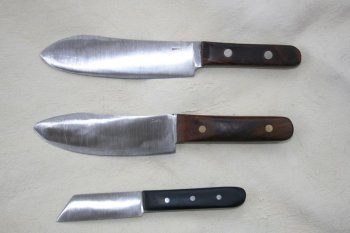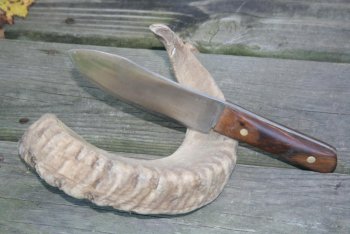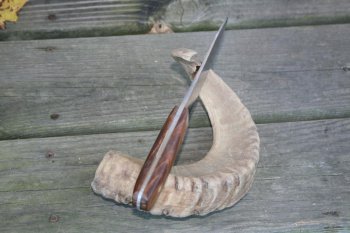Doug Lester
Well-Known Member

The top two knives are basically the same, both sort of pattern after Nesmuc knives from 9260, differentially hardened with a clay coat and tempered at 400* for 3 two hour cycles. The OAL's are approx 10" with 6" blades 1 1/2" wide and 3/16" thick at the handle with a distal taper. The handles are both of real lignum vitae. The top knive have scales that are pretty flat and held on with large nickel silver cutler's rivets. The middle knife's scales have a nice palm swell and they're held one with brass rivets.
The bottom knife was forged from 3/4" round 52100 rod and was soaked at just above non-magnetic for 5 minutes and then austempered at 430* for 4 hours. The OAL is about 7' with a 3" blade 15/16" wide and 1/8" thick without a taper. The scales are black linen micarta with small nickel silver cutler's rivets.
The top an bottom knifes are going into the knife block in my kitchen and I'll be taking the middle one with me to a knife show in November. Comments and suggestions are weldome.
Doug



